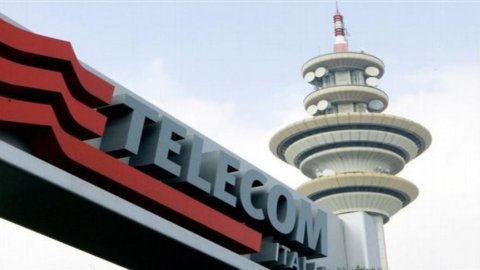Emilia Romagna, Lombardy and Lazio overall, they are the most advanced Regions in terms of digitization and are closest to the values of the European average. The most connected Municipality is instead that of Chiari, in the province of Brescia, and won the TIM “Italia Connessa – Comuni Connessi 2015” contest.
This is what emerged from annual report TIM "Italia Connected" presented today in Rome in its fourth edition. The study reveals important confirmations of the country's infrastructural level in terms of ultra-broadband which sees our country rapidly accelerating, recording in 2014 an increase in coverage of the NGN (Next Generation Network) fixed network of 16 percentage points and in the LTE mobile network of 38 percentage points over the previous year.
In terms of increased coverage of ultrabroadband networks, Italy was recognized as the top performer in comparison with the main European countries. In the country, the central-southern regions have reached levels of coverage above the national average: Calabria is in the lead with 80% of the housing units reached by fixed NGN networks, followed by Campania (70%) and Lazio (53% ) in September 2015. Data confirming the effectiveness of the public-private partnership model implemented by Telecom Italia in the south, where the company won all the tenders called by the Ministry for Economic Development.
Overall, the report, together with the signs of dynamism that come from the plans and actions of the Government and the European Union, highlights recovery prospects for Italy in the digital rankings. However, it is necessary to continue developing a more widespread request by citizens and businesses for digital services, especially public ones: from school to e-government, healthcare and smart city solutions. This year, in the TIM report “Italia Connessa 2015” 90 indicators were defined and measured on the basis of which the photograph of the digital state of the Regions was built.
For the first time, the DESI methodology (Digital Economy and Society Index), used by the European Union to measure the level of digitization of the 28 countries, which made it possible to analyze each region on the basis of 32 indicators aggregated into 5 sub-dimensions: the level of connectivity, digital skills, use of the Internet, the integration of digital technologies, the development of digital public services. This made it possible to represent the state of digitization of each Italian region by drawing up a ranking based on both individual indicators and on the 5 sub-dimensions overall.
The results of the new “Italia Connessa” report were illustrated by Roberto Opilio, Operations Director of Telecom Italia I TIM and by Simone Battiferri Business Director of Telecom Italia I TIM. Also participating in the round table – moderated by François de Brabant, Senior Advisor Ernst & Young – were Antonio Samaritani, Director of the Agency for Digital Italy; Elio Catania, President of Confindustria Digitale; Laura Castellani, Information Systems Director, Tuscany Region; Valeria Fascione, Councilor for Innovation, Campania Region; Simone Puksic, President of Insiel, Friuli Venezia Giulia Region; Raffaele Donini, Councilor for Transport, Infrastructure and Digital Agenda, Emilia Romagna Region; Matteo Francesconi, Councilor for Innovation in the municipality of Capannori and Alessandro Luciano, President of the Ugo Bordoni Foundation. Considering all the analysis dimensions of the DESI, Emilia Romagna, Lombardy and Lazio stand out and lead the ranking and are closer to the European average.
Furthermore, the gap persists between the Northern Regions and Lazio on the one hand, with values above the national average, and on the other the Regions of Southern Italy which are positioned in the lower part of the ranking. Marco Patuano, Chief Executive Officer of the Telecom Italia Group, he declared “A more digital country is a growing country and our investments prove it. In Italy, the 2015-2017 industrial plan envisages 10 billion euros, of which 5 exclusively dedicated to the innovative component, which confirm the leading role of Telecom Italia in connecting the entire national territory with the best fixed and mobile ultra-broadband infrastructure. We have already achieved coverage of more than 41% of real estate units with fiber and over 87% of the population with LTE technology”.
“We want to continue the process – added Patuano – also by strengthening the coverage plan of the new generation networks in the market failure areas, extending it to another 1.146 Municipalities not initially envisaged. We will continue together with the Regions and local Administrations according to the virtuous model of partnership between public and private already implemented in the Central-Southern regions, where we have invested 750 million euros to give a strong boost to the digitization process". During the day the the municipality of Chiari was proclaimed the winner of the TIM “Italia Connessa” contest – Connected Municipalities -, announced last June in order to promote the culture of innovation among local administrations and aimed at over 130 medium-sized Italian municipalities, with a population of between 14.000 and 51.000 inhabitants.
The municipality of Chiari, in the province of Brescia it was selected by an independent Advisory Board made up of leading personalities in the world of innovation and awarded for presenting the best local digital development plan. In the municipality of Chiari, TIM will build the fixed and mobile ultrabroadband infrastructures by 2016, ahead of its development plans. TIM has however recognized the validity of the projects presented by the other two finalist municipalities Narni (in the province of Terni) and San Miniato (in the province of Pisa) for which the company has undertaken to build the new generation network infrastructure by 2017.





